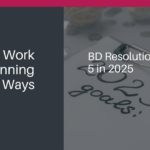Last month we delivered what would have been our two full day face to face classroom workshop in Key Client Management & Winning Work to clients in Canada online. One thing we already knew – you can’t just take a classroom course and deliver it online, there’s so much more to think about. How do you engage your audience; know they aren’t distracted and know they are taking the information on board? With over 20 years experience in corporate training we took the principles and tested on ourselves, our colleagues and friendly clients how best to adapt to get it right online. And those rehearsals were the best investment we could have made!
Here’s what we learnt delivering Live Virtual Classroom Training:
Engage with participants before they attend the first training session
- Ask them how they’re feeling, get a sense of what issues are common. We sent a survey to uncover the key challenges our delegates were facing.
- Arrange short calls with key stakeholders to get different perspectives.
- Give your participants a flavour of what they can expect and what they will learn.
Set the expectations
- Virtual training always starts and ends on time! Make that clear from the outset and reduce the number of latecomers.
- Learning works when there aren’t other distractions. Set the expectation that phones are off, children are being looked after and the dog’s been let out already.
- Make clear that there will be time for tea/coffee/water/comfort breaks but always set a clear time to reconvene.
Get to know your audience
- Making those human connections at the start of the sessions is very important when you are not in the same room. Give people something about you as trainers and invite them to share information about themselves – game play is a fun and effective way to do this.
- Make time for the informal chats towards the end of the formal sessions.
- But equally take people offline if they have follow up that may not be relevant to everyone else…no one wants to be sat looking at the screen longer than they need to.
Plan your audience
- Better to do more training sessions with less people than trying to get more people through in one go.
- Your delegates learning is your primary objective so keep the number of delegates in a session to a minimum (max 12) and for breakout sessions even less (max 6).
- As you would in a classroom assess if your delegates have strengths and weaknesses that will complement or support others in smaller groups situations
Keep it interactive
- Check in with questions or reaffirm points if you think attention is wavering. Running a poll or quick interactive quiz is a good way to checking information is being retained.
- Use Role Play. We were sceptical this would work but it turned out to bring the most engagement and deliver the best results.
- Set homework. Especially if you are able to make it so it requires collaboration with others.
Managing Screen/Engagement Fatigue
- Keep the content fresh and dynamic. It is not an over exaggeration to say we planned every minute of these sessions. At times it became close to a theatrical performance with audience participation timed to perfection
- Your voice, facial expressions and your hands are your main communication tool so make sure your audience can see them. Ensure your camera is at eye level!
- Use Visuals to back up key points – say it, say it again while showing it. Use animation with purpose. If you are going to make a key point or illustrate change in time, animation is a great tool but don’t over use it.
But we can’t stress enough the number one lesson….rehearse, amend, rehearse.
LIVE VIRTUAL CLASSROOM
A highly collaborative and interactive online training environment. Especially effective where behavioural change is an objective these facilitated sessions are designed for smaller groups.






 We are a business development consultancy which is passionate about helping our clients develop processes, skills and behaviours that will result in increased sales and improved margins.
We are a business development consultancy which is passionate about helping our clients develop processes, skills and behaviours that will result in increased sales and improved margins. 

